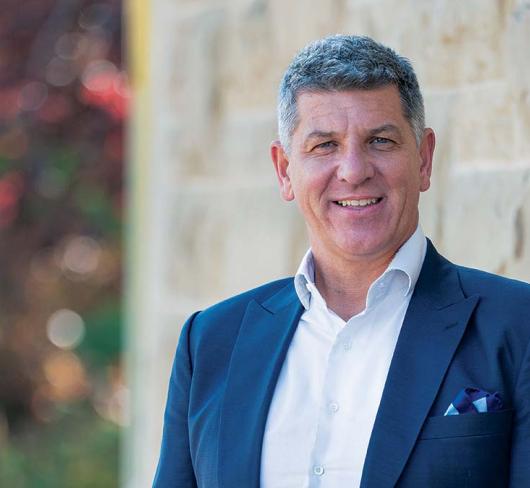
Visiting Mars Bloch
For the last three years, Marietta (Mars) Bloch, B.Sc. (Hon), B.Ed., has co-ordinated the Toronto District School Board's science and technology programs, from grade 1 through secondary school. She is also president of the Science Teachers' Association of Ontario (STAO), a voluntary, elected position that keeps her busy after work hours and on the weekends.
"As a child, I was always interested in trying to understand how the world works,'' says Mars. "That led to taking science courses throughout high school and physics courses at university. And my nickname, Mars, which started in high school, comes from my fascination and interest with astronomy."
In 1976, while still a student in the Faculty of Education at Queen's, Mars taught her first practicum - a grade 5 unit on astronomy. It was a light bulb moment! Teaching is creative work, she realized, that involves the practitioner in life-long learning. "Twentyseven years later, I am still excited to find out more about teaching and learning," she says.
Mars has taught in all three elementary divisions and spent three years seconded to York University's Assessment of Science and Technology Achievement Project (ASAP). This project looked at assessing students' learning in science and technology. By the time the Ministry of Education was ready to write its new science and technology curriculum, the work of ASAP, through the involvement of its partner boards and their teachers, was used in the development of the Ministry curriculum.
"This curriculum has a solid foundation," she says, pointing to the three goals listed on page 4. These provide a framework for the expectations. The goals are
- to understand the basic concepts of science and technology;
- to develop the skills, strategies, and habits of mind required for scientific inquiry and technological design; and
- to relate scientific and technological knowledge to each other and to the world outside the school.
"Science and Technology are two disciplines in one document, with technology being the least well understood. Technology in this document is about design, problem solving and understanding the 'built' environment we have created as humans. It is not about teaching information technology," says Mars.
"The 'strands' should be used as organizing tools, not as a prescription on how to deliver the curriculum. Instruction should encourage understanding through knowing, doing, and relating," says Mars. "Unfortunately, elementary teachers are integrating less because the curriculum documents have been presented as isolated, stand-alone documents. It's a huge challenge to have the time to find the links and commonalities that exist between the various disciplines.
"One wish that i would like to have is to be able to scrap Table 1 of Strands and Topics: Science and Technology, Grades 1-8, on page 8. This table makes the 40 suggested topics even more discrete and stifles integration. It is the goals that are important, not the topic titles," she stresses.
Mars is a long time member of STAO. Founded in 1890, the organization's has a membership of 2100, which includes teachers at all levels, from kindergarten through university. Over the years, STAO continues to change and grow to meet the needs of its members.
Currently, through its fledgling 'Science Works' branch, the organization is offering hands-on science and technology activity workshops for grade 7 and 8 teachers across Ontario, a program it hopes to extend to other elementary grades. Workshops are also available for secondary teachers. As well, STAO also offers a variety of print resources, including an elementary safety document called Be Safe! The STAO journal Crucible is issued five times a year and has a specific section for elementary teachers called Elements that provides relevant classroom activities. STAO also runs a highly successful conference every November. Yearly membership in STAO costs $53.50 including GST.
STAO is an organization for all teachers who have an interest in science and technology. There are many opportunities to be actively involved, ranging from committee work to serving on the executive. STAO's Elementary Curriculum Committee, for example, is a vibrant, active group that hosts its own booth at the STAO conference, and ensures the elementary voice is heard. Visit STAO's website at www.stao.org.
"STAO’s mission statement is to encourage excellence in science and technology education through leadership and service", says Mars.
Mars Bloch personifies this. Clearly, she continues to have a strong and positive influence on the development of Ontario's science and technology programs. Her efforts have been recognized both by her colleagues and by outside organizations. In 1988, while still a classroom teacher, Mars was awarded the Marshall McLuhan Distinguished Teacher Award. In 1998, she received STAO’s prestigious Jack Beil Award for Leadership in Science Education. Still proud of her eiementary roots, Mars hopes to encourage the same enthusiasm for science and technology that continues to motivate her.
"It’s a long way from that first practicum to my position at the TDSB. Yet science and technology still fascinate me and I try to share that fascination with others in every way I can," she says.
Charlotte Morganis the editor of the ETFO Voice.
